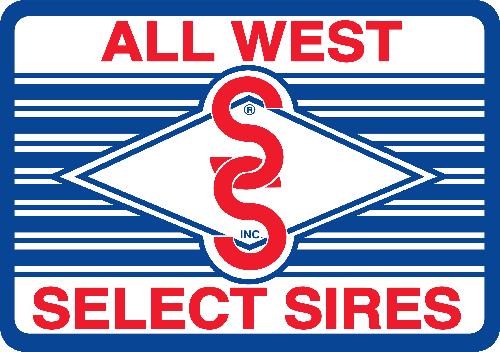By Carl Dahlen
Beef Cattle Specialist, NDSU Extension Service
Artificial insemination (A.I.) offers the opportunity to use semen from high accuracy, genetically superior sires at a fraction of the cost of purchasing a herd bull of similar genetics. In addition, using estrus synchronization and A.I. can increase the number of calves born earlier in the calving season and increase weaning weights of calves.
A large portion of the economic advantages resulting from implementing A.I. comes from the number of calves born in a herd from A.I. sires. The benefits are twofold: an immediate increase in sale value, and long-term benefits of infusing superior genetics into a herd.
Here are several steps that can be taken now to maximize A.I. pregnancy rates this spring:
Evaluate Nutrition: Cow body condition score (BCS) serves as an indicator of overall nutritional status. Cows should ideally be at a score of 5 to 6 on a 9-point scale. However, absolute BCS is only part of the story. Making sure cows are on an increasing plane of nutrition leading up to the breeding season will help maximize pregnancy rates.
Check Your Records: Calving records can tell us a lot about the likelihood of success when breeding specific females. Identify cows less than 45 days postpartum at breeding and cows that had very difficult births. You may still be able to get a portion of these females pregnant but expect lower overall pregnancy rates to A.I. if they are included in your breeding group.
Follow Vaccine Labels: Pre-breeding vaccinations are given to help protect cattle from several types of viruses and bacteria that can cause reproductive failure. Be sure to follow label recommendations when giving pre-breeding vaccines. Working events in many estrus synchronization protocols coincide with times when vaccine administration would be off-label, and vaccinating at these times could reduce pregnancy rates with A.I. dramatically.
Identify High-Fertility Bulls: Fertility differences exist among A.I. sires so be sure to review current estimates of sire fertility published by semen companies or talk with your semen supplier about which bulls consistently have generated superior fertility in the A.I. scenario you plan to implement (fixed-time A.I., heat detection, etc.).
Work Cattle Calmly: Each person working cattle always should practice calm, low-stress handling techniques through adequate facilities, or stress may lead to poor results. Moving cattle calmly through facilities several times in advance of the breeding season can reduce the stress of subsequent handling events and improve cattle temperament, and may increase pregnancy rates.
Heat Detection: Producers wishing to use protocols that include heat detection must identify cows that are in heat. Not catching cows that come into heat will lead to disappointing results. Old thumb rules of 30 minutes per day morning and evening will likely result in missed heats, so consider more frequent and longer heat detection periods.
Complete Protocol Compliance: Completing each task accurately and at the proper time is required for successful synchronization. Impacts of noncompliance (missed cattle, improper injections, CIDRs left in, etc.) are additive. If every task is completed correctly 90 percent of the time and a protocol requires three working events, the end result would be that 72.9 percent of females were synchronized correctly (.90×.90×.90 = 72.9 percent). Strive for complete compliance when executing tasks to limit negative additive effects.
Proper A.I. Technique: Proper semen handling begins when the semen arrives on the ranch. Transfer semen from dry shippers to storage tanks as soon as possible, and make sure the tanks have plenty of nitrogen and are kept in a safe place. Thawing semen, loading A.I. guns and insemination all need to be done correctly. Producers wishing to A.I. their cows need to be proficient at A.I. or should consider hiring an A.I. technician.
Weather: Adverse weather is a stressor that can impact the success of an A.I. program negatively. For summer breeding, be sure to schedule working and breeding activities for the coolest period of the day. Early morning (first light) is when the body temperature of cattle is the coolest. If you must work cattle during peak periods of heat, provide shade and water when possible, provide ample space for cattle to spread out in staging areas, and ensure cattle spend as little time as possible in closely confined working facilities.
Plan Post-A.I. Carefully: Whenever possible, transport cattle from day one to four after A.I. or delay shipment until 45 days after A.I. to avoid transport-induced pregnancy losses. For dry lot developed females either adapt to summer grass for a period prior to breeding or consider supplementing on pasture to reduce losses associated with rapid diet and environment changes.
Many factors can contribute to the success of an A.I. breeding program. Concentrating on managing factors that we can influence is imperative to maximize pregnancy rates and the number of A.I. calves born in an operation.

 .
. .
. .
. .
. .
. .
.